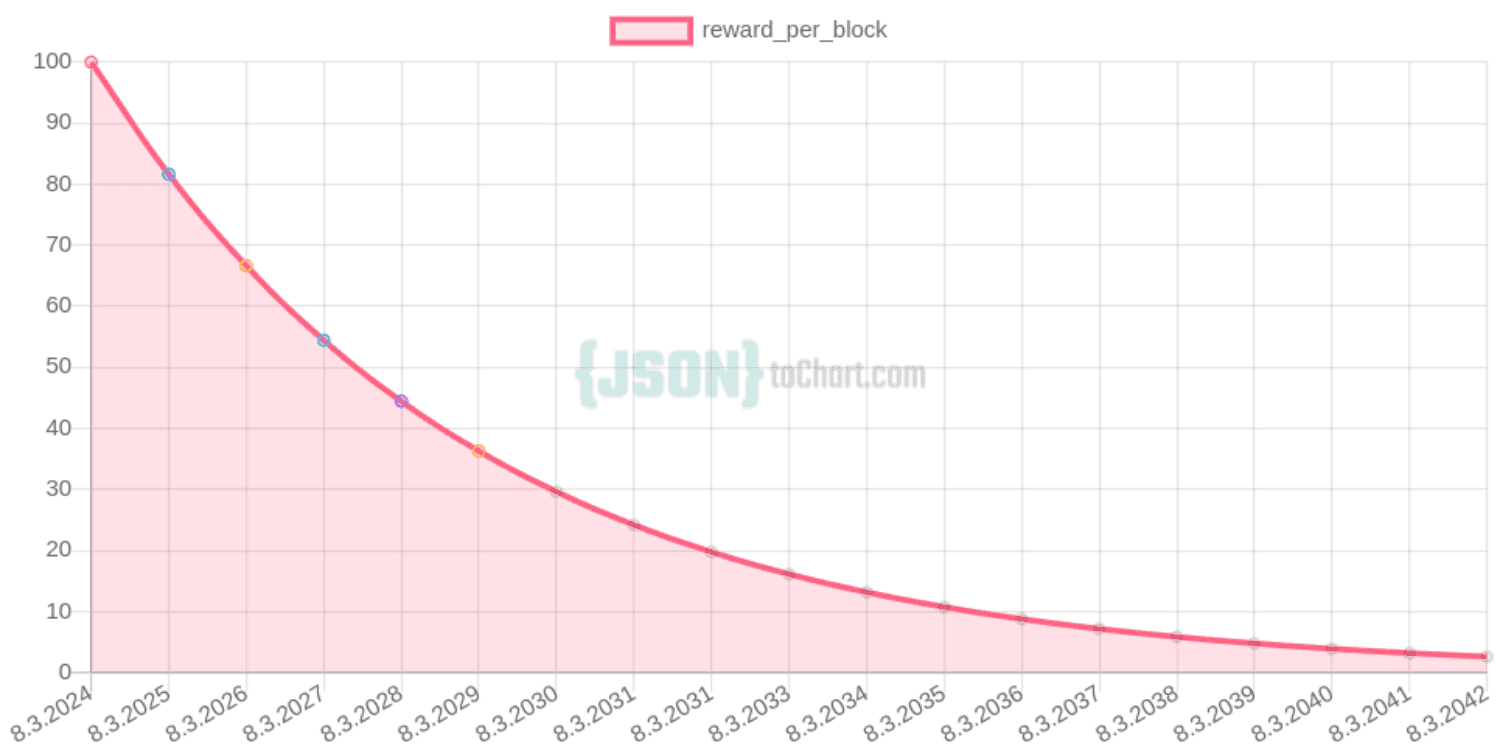Tokenomics
Hoosat Network's Coin Supply and Distribution
The Hoosat Network has a transparent and predictable monetary policy designed to ensure long-term sustainability. Here's a breakdown of the key points:
Total Coin Supply: The maximum supply of Hoosat coins is capped at around 17.1 billion. This finite supply helps control inflation and maintain the value of the coin over time.
Fair Distribution: There was a 360-block pre-mining phase, which equaled 100,224,000 HTN, constituting 0.58% of the potential max supply. The 86m of the premine was later burned. The total max supply is 17,185,510,833.03 coins if we assume 1 block per second.
Regular Halving: The block reward for mining new coins will be subsidized every year. This process gradually reduces the rate at which new coins are introduced into the network, further contributing to coin scarcity and stability.
Long-Term Sustainability: With a total subsidy cycle of over 65 years, the issuance of new coins will reach zero in 115 years, ensuring a predictable and sustainable long-term supply.
Blockchain launched: The network was launched for public access on 8th March 2024, at 14:00 UTC.
Block Rewards: Assuming a block production rate of 31,536,000 blocks per year, the block rewards will follow a predictable subsidy schedule. You can find more detailed information about the specific block reward schedule on the next page's table.
Developer fee: There is now consensus wide developer fee, with 1% minimum and 5% default. That means percentage of the block reward goes to the developers.

| Years | Reward per block | Mineable HTN |
|---|---|---|
| 1 | 100 | 3153600000.00000 |
| 2 | 81.64965809 | 2574903617.52624 |
| 3 | 66.66666666 | 2102399999.78976 |
| 4 | 54.43310539 | 1716602411.57904 |
| 5 | 44.44444444 | 1401599999.85984 |
| 6 | 36.28873693 | 1144401607.82448 |
| 7 | 29.62962962 | 934399999.69632 |
| 8 | 24.19249128 | 762934405.00608 |
| 9 | 19.75308641 | 622933333.02576 |
| 10 | 16.12832752 | 508622936.67072 |
| 11 | 13.16872427 | 415288888.57872 |
| 12 | 10.75221834 | 339081957.57024 |
| 13 | 8.77914951 | 276859258.94736 |
| 14 | 7.16814556 | 226054638.38016 |
| 15 | 5.85276634 | 184572839.29824 |
| 16 | 4.77876371 | 150703092.35856 |
| 17 | 3.90184423 | 123048559.63728 |
| 18 | 3.18584247 | 100468728.13392 |
| 19 | 2.60122948 | 82032372.88128 |
| 20 | 2.12389498 | 66979152.08928 |
| 21 | 1.73415299 | 54688248.69264 |
| 22 | 1.41592998 | 44652767.84928 |
| 23 | 1.15610199 | 36458832.35664 |
| 24 | 0.94395332 | 29768511.89952 |
| 25 | 0.77073466 | 24305888.23776 |
| 26 | 0.62930221 | 19845674.49456 |
| 27 | 0.5138231 | 16203925.28160 |
| 28 | 0.41953481 | 13230449.76816 |
| 29 | 0.34254873 | 10802616.74928 |
| 30 | 0.27968987 | 8820299.74032 |
| 31 | 0.22836582 | 7201744.49952 |
| 32 | 0.18645991 | 5880199.72176 |
| 33 | 0.15224388 | 4801162.99968 |
| 34 | 0.12430661 | 3920133.25296 |
| 35 | 0.10149592 | 3200775.33312 |
| 36 | 0.08287107 | 2613422.06352 |
| 37 | 0.06766394 | 2133850.01184 |
| 38 | 0.05524738 | 1742281.37568 |
| 39 | 0.04510929 | 1422566.56944 |
| 40 | 0.03683158 | 1161520.70688 |
In this table you can see the progression of block reward deflation. Assuming block per second. Subsidy(t) = BaseSubsidy / (1.5 ^ (t / CurveFactor)) is the mathematical representation of that deflation.

